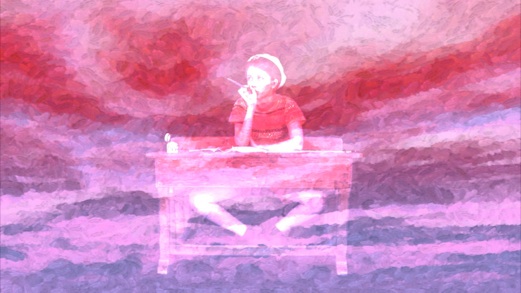L’Enfant et les Sortilèges
Presentation of the Concert Version with Images

A text by Aleksi Barrière, dramaturge:
« Waking up with goodnight stories »
Shouldn’t we be over fairy-tales yet? A casual glitz and glitter in 18th century spectacle, they became the natural expression of a folk and nation’s spirit in Romantic opera and ballet, serving many patriotic agendas from the brothers Grimm to Tchaikovsky and Dvořák. But do they really belong to the 20th and 21st century, these ages of scientific thinking and socially aware art, where theatre ought to reflect the darkness of our times, rather than offer the audience blissful relief and oblivion through illusions and enchantments? In 1925 (or in 2013), when wars take mechanically thousands of innocent lives, when the slow rise of democracy is threatened all over the globe, when revolutions rumble, doesn’t magic seem outdated, to say the least?
And yet, in the aftermath of World War I, in a torn apart Europe where nothing in the future seems promising or secure, Stravinsky and Prokofiev turn back to ancient folk tales, and Leoš Janáček writes The Cunning Little Vixen while Maurice Ravel premieres L’Enfant et les sortilèges. In those operas and ballets, animals can speak, and our globalized and complicated world isn’t much wider than a farmyard or a country house. Are we dealing with some form of denial, a nostalgic attempt to find solace in childish stories and lighten the burden of modern life through infantile entertainment?
Pretty much the contrary. Reactivating the fairy-tales’ function as seminal morality plays, quoting a form of street theatre or music-hall that was highly politicized, putting peasants, commoners and allegories on stage, using subjects that allow the music to draw its inspiration from folk tunes and jazz that were despised by the elite, all serve a very specific purpose. Poetry, music and dance have the power, so to say, to set the fox to mind the geese, to put the most burning content under the eyes of the establishment, thanks to the refined and respectable form of opera. One cannot resist the power of a good story, of its humour and fantasy, and that moment we lower our guard is the one any good storyteller uses to take us where we couldn’t have expected to go.
It is no coincidence if the one bit of text Ravel had his librettist Colette add to L’Enfant was the Squirrel’s revolutionary tirade that persuades his fellow animal comrades to assault the selfish and cruel Child. And if the Child’s cry of freedom “Hourrah ! Je suis libre, libre, méchant et libre !” strangely resembles the desperate cry of the slave, “Aoua ! Méfiez-vous des blancs, habitants du rivage !”, in the Chansons madécasses, the songs about colonized Madagascar Ravel composed in the same period as his opera. The story of the Child, like all fairy-tales, is an initiation narrative, showing how individualism, which is condensed ignorance and violence, can and should transform into awareness to the world, others and nature.
But how can we tell this story today? The lush and sophistication of Ravel’s orchestration call for heavy resources, and in our economy we must face the choice of either performing operas in concert versions, or not performing them at all, giving away our right and necessity to feed ourselves on great masterpieces. In this respect, the video work can radically widen the perspectives of a concert performance. Seizing the chance to leave aside the material complications of the stage, it allows us to freely realize the visual feast Ravel imagined, and which is always difficult to bring to life in any fully staged production. As a matter of fact, the score, as a fantaisie lyrique, was intended for dancers, therefore envisioning a form much freer than a simple stage drama. The possibilities of video expand the means and intents of choreography, creating a world that knows no physical boundaries and can truly recreate the crazed images of childish imagination. Nevertheless, the aim is not to add our own fantasy as an independent layer of experience for the audience, but to connect it intimately with the music, by carefully crafting rhythms and colours according to the score and integrating the performers’ presence and energy into the picture through live filming and what we have called “video masks”, places where the artificial picture and the flesh-and-bone singer are reunited. This is how we hope to give life to Ravel and Colette’s original project, as a full multimedia experience, which opera is all about.
Fairy-tales mean imagination, and imagination means “think out of the box”. This is what we have been trying to achieve, and we hope you can now also be inspired by this deepest message of Ravel’s fable for times that doubt mankind.
